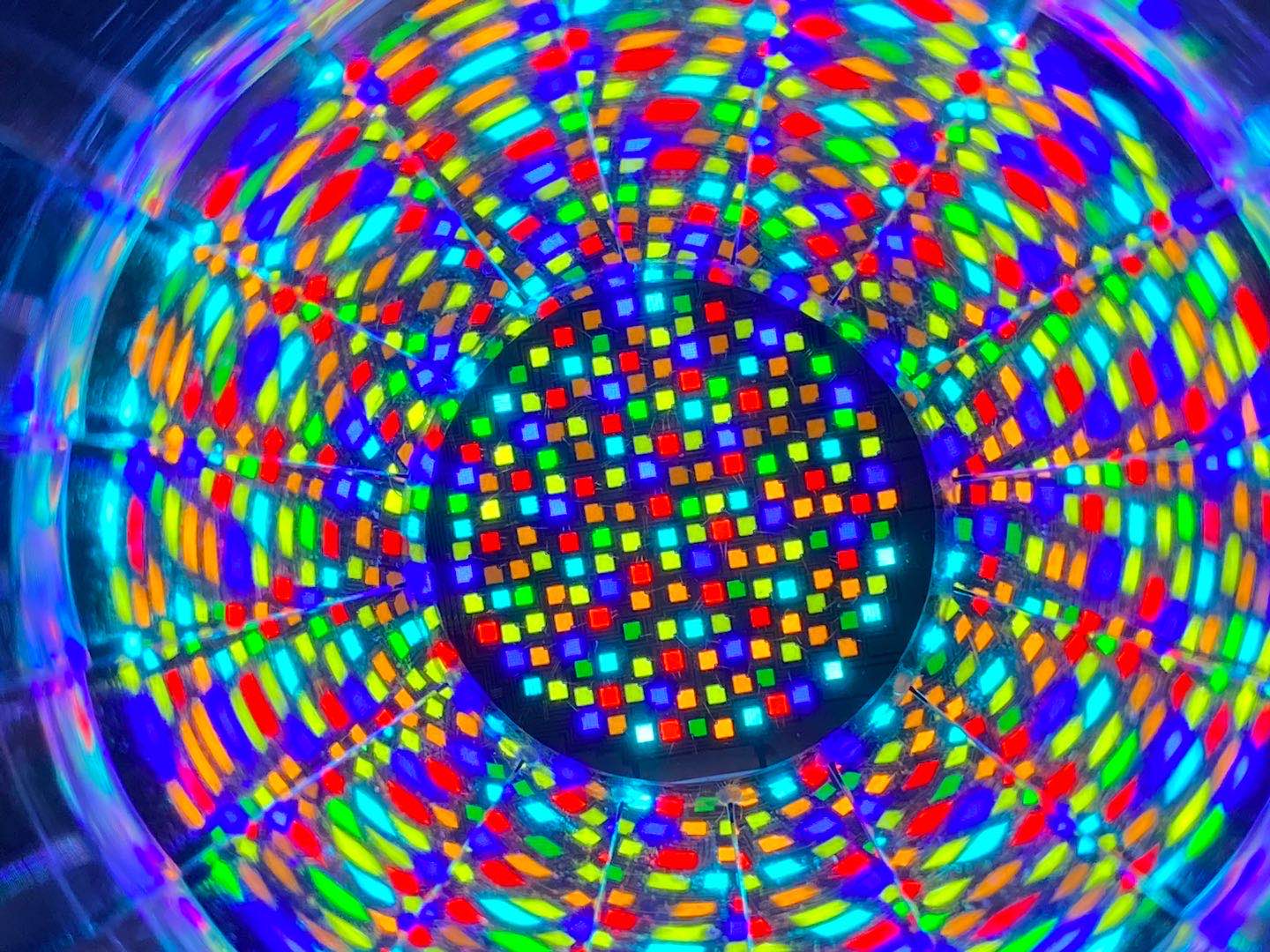1010
For most of us, the idea of mixing colours from red, green and blue primaries is more or less an article of faith. Now, though, some people are starting to throw cyan, lime and amber into the mix. What’s going on?
It’s something we could almost call the next generation of LED technology, although it’s something that’s been sneaking into play for the last few years, typically on higher-end options. So, let’s do a brief history of LED colour mixing.
The first generation of full colour mixing LED lights generally used red, green and blue LEDs alongside at least one channel of white, simply because conventional RGB LEDs produce a very narrow peak on a spectrum. Mixing them might produce something that looks whitish when it’s aimed at a white or grey card, but the spectrum will have three pronounced peaks, and any colour falling between those peaks might look dull and greyish. Add the white and we can at least take that white and tint it, and end up with desaturated colours, colours close to white, that behave as we’d expect.
Next it was realised that using two channels of white, in tungsten and daylight, made for better results given that we’re likely to occasionally want both those kinds of white. Otherwise, a light might have included – say – a tungsten-balanced white, and added blue to it, which would result in gradually spikier and less ideal spectrum as the light was adjusted toward cooler whites. Add a cooler and warmer white in there, and we can blend between the two, end up with better-quality whites, and still tint things if we want to.
Then, a fairly big improvement came along in the form of phosphor-converted colours. Most white LEDs been phosphor-converted, where a blue LED illuminates a yellow-emitting phosphor and the results combine to create white light. Creating phosphor-converted RGB LEDs would be ideal, since the phosphors emit a less saturated light than the traditional LEDs. There are problems in that phosphors can only convert light to shorter wavelengths – that is, bluer – so we can’t make a useful blue-emitting phosphor glow with a blue LED. Many lights have phosphor-converted red and green with conventional blues.
That helps quite a lot, although the RGB emitters still don’t work very well in combination to create white light, so designers may still use phosphor-converted red and green, conventional blue, and two different whites. Violet-emitting LEDs can be used to make a blue phosphor glow, but that’s still an emerging technology.Most recently, some designs have been experimenting with using other colours, which go by various names but often include cyan, lime green and amber or orange, sometimes notated RGBACL. This allows the light to produce a better selection of certain colours – for instance, an RGB light would have to simulate orange by mixing a small amount of green with a lot of red, and if the red and green were phosphor-converted, that might lead to a rather desaturated orange. An RGBACL light can use its orange or amber emitter.
The key benefit is that some of the most recent designs – such as the 300W hard light imminently to be released by Prolycht – can generate high-quality light from mixing these coloured emitters, without requiring white emitters.
So that’s a rough technological history of LED lighting.
Is all this a good idea? Well, if we mainly want colours near white, it certainly is. Historically, because of the limitations of cameras, it was actually a bad idea to use very saturated colours. Certainly the reds created by non-phosphor-converted red LEDs can look odd on conventional HD video camera systems that aren’t set up to record or reproduce colour that saturated. More modern systems, Rec. 2020 systems on HDR equipment, are better, but still very much in the minority. The ability to produce gentle colours is certainly important, and the ability to produce (say) an orange that’s actually an orange, as opposed to a combination of red and green, reduces unpredictability.
At some point that becomes an issue of the algorithm used by the light to combine its colour channels. A light specified for a hundred watts could, of course, have a hundred watts of each channel, so if we ask for full power amber, we get 100 watts of amber alone. Such a light might not be able to turn on all of its channels at full power simultaneously without overheating, but it could produce full power, high quality colours.
At this point we’re speculating wildly. It’s getting complicated, and it’s likely we’ll see all kinds of interesting designs over the next few years. Cheaper violet emitters might be a key enabling technology, as well as cheap, highly accurate sensors to calibrate lights that really do now need calibrating, especially if we want young ones and old ones, or options from different manufacturers, to match. Either way, the field has come on hugely over the last few years, and with any luck we may soon be able to finally put concerns over LED matching and colour quality to bed, have our cake, and eat it too.
